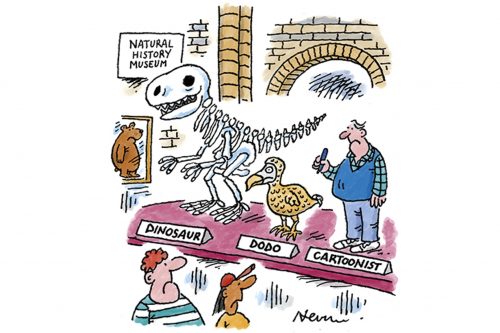Oh We Did Like To Be Beside The Seaside!

In the ‘old normal’ this weekend would have seen cartoonists flocking like seagulls to the wonderful Herne Bay Cartoon Festival. With this year’s event c19ncelled here’s a trip down memory lane with the fabulous posters from previous years and links to the festival holiday snaps. 2013 Poster by © Hunt Emerson The Herne Bay event started […]
Spectator Article: the future of cartooning

A rare mass-gathering of Private Eye cartoonists in 2013 (Rob Murray standing, 9th from right) Rob Murray writes in response to Nick Newman’s Spectator piece (see previous post): Nick Newman, one of the UK’s best and most prolific gag cartoonists, has written an article for this week’s Spectator about the challenges facing our art form. […]
Why does no one want to be a cartoonist any more? The lack of new blood doesn’t bode well for the industry’s future

Written by Nick Newman for (and courtesy of) The Spectator with bonus cartoon content. ‘Nightmare!’ is how The Spectator’s cartoon editor Michael Heath has been describing cartooning for at least 30 years, but it’s truer now than ever. Eighty years ago, cartoonists were so celebrated that waxworks of Low, Strube and Poy were displayed in […]
Cartoonists protest summit of the International Labor Organization

Cartoon © Steve ‘Jonesy’ Jones The International Labor Organization (ILO) based in Geneva, Switzerland, is holding its virtual summit this week with the participation of heads of state and government, ministers, representatives of employers and workers. At CARTOONS FOR CHANGE we decided to invite cartoonists and illustrators from all continents to protest for 365 days, […]
